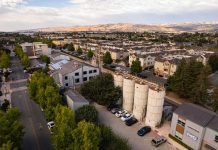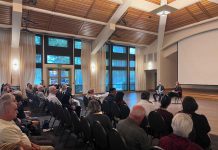Some 55 years ago, the Korean War raged and I was there as a Marine. I felt as most Korean War Marines did that the Navy medical Corpsmen who were by our side in battle performed admirably. In fact, one Corpsman, HM1 Billy Gene Cooper became my friend.
Although Cooper had only arrived in late June 1951, we became friends in August, when the First Marine Division went into reserve north of Wonju, South Korea. Yet, our Marine Division plunged back into the attack in September. We attacked the ridgelines above the “Punchbowl” in northeastern Korea, close to the east coast.
Early on the morning of Sept. 13, two days after my 21st birthday, all battle quieted. It was surely “the land of the morning calm.”
Some time after 8am, my new friend, HM1 “Doc” Billy Gene Cooper, our headquarters corpsman, came over to brag about his son. He stood beside my foxhole, telling me about his new born baby boy that he had never seen and reading from a recent letter from his wife. He was a very proud papa; he knelt down to show me pictures. Then he straightened up. I had to stretch my neck to look up to him. Sitting in my foxhole, I was just able to peer out with only my helmet above ground.
Since the hills were alive with North Koreans, it is not surprising that enemy observers were behind our positions. And yet, the North Koreans would zero in their own positions for future salvos by mortars and artillery. This would have to be the explanations for their salvo right on target, particularly on our reverse slope. No matter, we were in holes these communists had occupied the day before. Without warning, an enemy mortar barrage salvoed into our positions.
I heard the “swoosh” an instant before it hit and I fell to the bottom of my foxhole. But it wasn’t fast enough. After the explosion, I felt stinging in my back. With one hand, I reached around and felt pieces of metal. When I looked, my hand was bloody.
Then I realized that my new buddy, “Doc” Cooper was lying there outside my hole, face down. The same mortar that landed beside my hole, landed at his feet. The front of his body had been gutted; he was killed instantly. I looked down hill at our mortar section. Most of them had been blown out of their foxholes. This barrage was a direct hit. In an instant, most of the mortar section were killed or wounded.
I got up out of my hole and walked up to Lt. Brydon’s foxhole (machine-gun platoon leader) near the crest of the hill. Another Corpsman, new to the company, tended the wounded then put ponchos over “Doc” and the others killed. Later, he came up to Lt. Brydon’s hole and bandaged my back.
I did not go back to my hole. I stayed there with the new “Doc” and the lieutenant. Already, my new friend, old “Doc” Cooper looked smaller in death than in life.
The new headquarters “Doc” spoke with tears of the old “Doc’s” son and family.
And his tears were catching.
“Doc” Cooper, my friend, was killed in action near Hill 749 on Sept. 13, 1951. HM1 Billy Gene Cooper was born on Oct. 1, 1928. He died a few weeks before his 23rd birthday.
Almost 55 years have gone by since that traumatic experience, but last Saturday, on Memorial Day, I always think of “Doc” Cooper.
Of course, this is what Memorial Day is all about. I hope you observed the day in remembrance.
Burton Anderson, a U.S. Marine veteran of the Korean War, has lived in California for about 50 years. He has a background in aerospace industry. He can be reached at ba****@*ol.com.







